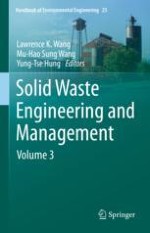2022 | OriginalPaper | Buchkapitel
9. Health and Safety Considerations in Waste Management
verfasst von : M. Shahrir M. Zahari, Izan Jaafar, Shahrul Ismail, Noor Zaitun Yahaya, Hamidi Abdul Aziz, Yung-Tse Hung
Erschienen in: Solid Waste Engineering and Management
Aktivieren Sie unsere intelligente Suche, um passende Fachinhalte oder Patente zu finden.
Wählen Sie Textabschnitte aus um mit Künstlicher Intelligenz passenden Patente zu finden. powered by
Markieren Sie Textabschnitte, um KI-gestützt weitere passende Inhalte zu finden. powered by
